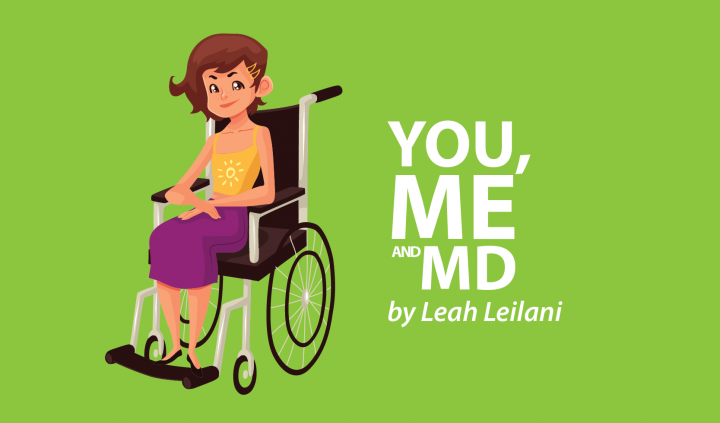The 4 Categories of Tiredness

Those of us with invisible chronic illnesses master the art of mindfulness for our bodies. Since our symptoms show little signs of existence, we must work hard to translate our body’s hidden language of fatigue. Neglecting this skill could impede receiving the medical help we so desperately need.
Throughout the years of describing my rare condition to doctors, nurses, and the general public, I have realized that there is more than one single definition for the word “tired.” Following are four categories of tiredness that patients with muscular dystrophy experience, and what I do to dampen their effects.
Mental tiredness
Mental exhaustion is easy for me to self-diagnose because it is felt in the brain rather than the body, so it’s not as easily confused with my physical symptoms. Mental exhaustion, sometimes called brain fog, is an inability to focus and process information. It takes physical effort to concentrate, like swimming through mud. Sometimes I need to read a sentence several times before the information seeps in.
Adequate sleep at night and for a few hours during the day does help to reduce the severity of my brain fog. Taking breaks and doing activities that require little concentration — like listening to music and watching television — give my mind a chance to relax and recuperate.
Emotional and social tiredness
Emotional and social exhaustion can be felt both physically and mentally. Oftentimes, social interaction can eat up the energy I use to work my facial muscles used in speaking. Laughing and conversing go from effortless to strenuous in a matter of hours. I transform from a social butterfly into a quiet introvert. Other times, stimulation from social events and gatherings result in a craving for silence and solitariness.
In these situations, stimulation deprivation is what I turn to. Darkness, soft music, and even meditation are the things that work best to quiet my body and mind.
Weakness
As a child this symptom was always the hardest to accurately describe. For most able-bodied people, the concept of weakened muscles is completely foreign. They are unable to fully comprehend what weakness is unless they’ve run a marathon or exercised to muscle fatigue. I commonly refer to my weakness as living in a constant anaerobic state. I also liken the sensation of weakness to having Jell-O muscles that lack rigidity and balance.
The only remedies I’ve found that work best at treating weak muscles is lying still until the symptoms ease and drinking lots of electrolytes.
Relapse
Relapse is the word I use to describe the cacophonous episode of all these symptoms combined. Relapses are produced when I’ve overexerted myself, and they can last days or even years. They can affect my most vital organs in disastrous ways, so I try to avoid relapses at all costs.
Because of their severity, relapses can be the hardest to heal from. Besides getting lots of rest, sleep, and managing the inevitable symptoms, there is no cure for a relapse. But on occasion a relapse is worth fighting through (within reason) because life must be lived.
***
All types of tiredness are valid and real. Just because something can’t be seen or felt, doesn’t mean it isn’t there and isn’t a struggle for someone else.
Do you have any tips on how to handle these types of tiredness? Comment below!
***
Note: Muscular Dystrophy News is strictly a news and information website about the disease. It does not provide medical advice, diagnosis or treatment. This content is not intended to be a substitute for professional medical advice, diagnosis, or treatment. Always seek the advice of your physician or another qualified health provider with any questions you may have regarding a medical condition. Never disregard professional medical advice or delay in seeking it because of something you have read on this website. The opinions expressed in this column are not those of Muscular Dystrophy News or its parent company, Bionews, and are intended to spark discussion about issues pertaining to muscular dystrophy.







Leave a comment
Fill in the required fields to post. Your email address will not be published.